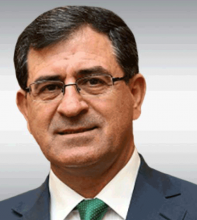You are here
Striving for balance between safety, protection, growth
Feb 12,2023 - Last updated at Feb 12,2023
The Social Security Investment Fund (SSIF) focuses on balancing four key investment objectives: Safety, protection, low risk, and good returns. This strategy is aimed at ensuring the long-term stability of the social security programme. When investments are "safe", it means they have low risk and minimal potential for significant losses. Meanwhile, "protected" investments are secured from theft, fraud, or mismanagement. Both objectives are crucial for both the investing entity and the fund owners under the social security umbrella.
Several factors impact the optimal distribution of SSIF, including the fund's investment objectives, risk tolerance, target return, and the age of its beneficiaries. The optimal allocation seeks to strike a balance between stability and capital preservation and long-term growth. This can be achieved through a mix of low-risk fixed-income securities, such as government bonds, and a diversified portfolio of stocks. The exact allocation depends on the fund's objectives and its risk-taking capacity. The SSIF board regularly reviews and adjusts its portfolio based on market conditions and its objectives.
According to the latest data, the SSIF's assets grew by 1.4 billion dinars in 2022, reaching 13.8 billion dinars at the end of the year, compared to 12.3 billion dinars in 2021, with a growth rate of 12%. This growth was due to the fund's investment income of 685 million dinars, the evaluation of its strategic stock portfolio of 414 million dinars, and the transfer of 335 million dinars from the Social Security Corporation's insurance surplus.
As of the end of 2022, the SSIF's portfolio was distributed as follows: 55.6 per cent government bonds, 18.1 per cent stocks, 13.3 per cent deposits in banks and treasury bills, 5.6 per cent real estate, 3.4 per cent loans, 2.3 per cent investment in tourism, and 1.7 per cent other. The question arises as to whether the SSIF portfolio is safe, protected, low-risk, and has an optimal return.
A diversified portfolio helps mitigate risks, but the optimal allocation depends on other factors such as the fund's investment horizon, risk-taking capacity, and liabilities structure. Regular reviews and rebalancing are essential to ensure that the portfolio aligns with the fund's objectives. Stress testing and actuarial studies must be conducted to evaluate the portfolio's performance in the event of problems, such as loan defaults or a decline in company share prices.
The safety and security of the SSIF funds are ensured by several elements, including steady growth in assets, independent accounting, diverse investments, strong control systems for effective and transparent fund management, and regular audits, tests and actuarial studies.












